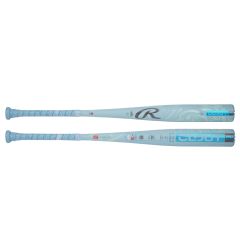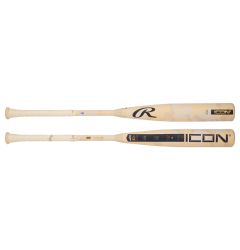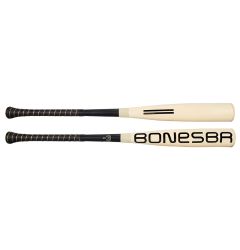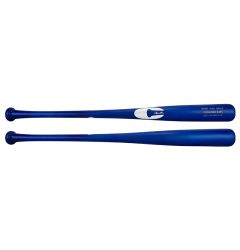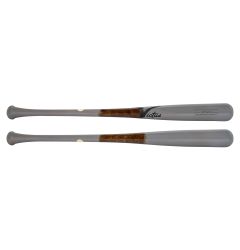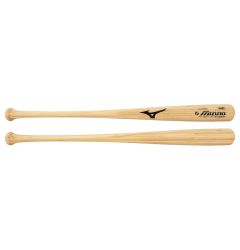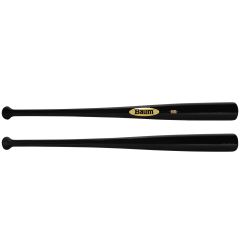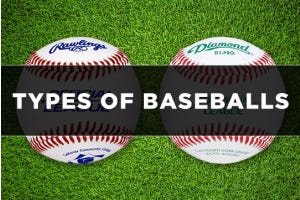Bat Preference: Wood, Alloy, or Composite
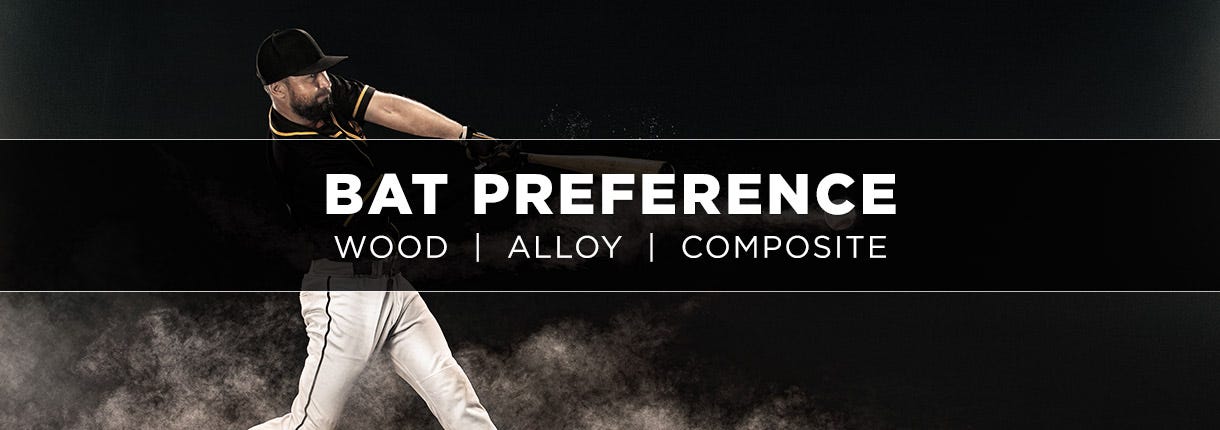
There are so many bat choices for baseball players today. Understanding the difference between composite and aluminum bats is sometimes difficult for players. Wood bats are not much simpler as there are different types of wood to choose from. Narrowing down the right bat for you can be difficult, but today we will help you determine which type is right for you based on your play style.
In this article, we'll look at the following topics:
Alloy and Composite Metal Bats
When shopping for metal bats, you will see two main categories to choose from: Alloy and Composite. Alloy is short for aluminum which is a traditional metal bat made from one piece of aluminum. Composite bats are made from a composite material such as carbon fiber. Each type of bat has unique advantages, so let's break down the differences and see which bat is right for you.
What is an Aluminum (Alloy) Bat?
- Alloy bats are made from aluminum or a mixture of two or more metals and have been a staple in youth baseball for years. Alloy bats are normally only available in 1 piece construction and are known for having a stiffer feel in the swing zone. They are also loved for their durability and do not have issues performing in cold weather like their composite counterparts.
- Alloy bats come in a variety of swing weights to fit every style of hitter. Important to consider is the fact that alloy bats do not need to be broken in to achieve their full performance potential. They are hot right out of the wrapper. This makes them a great choice for someone who wants to use the bat immediately.
Example Of A Best-Selling Alloy Bat
What is a Composite Metal Bat?
- Composite bats are made from a layered composite material, normally carbon fiber, and can come in 1-piece, 2-piece, or even 3-piece construction. On 2 or 3-piece bats, the barrel and handle are two separate pieces that are joined together by a traditional piece. This type of construction helps to minimize the vibrations felt in the hands. They can also flex to create a greater trampoline effect on contact generating more power.
- Composite bats come in a variety of swing weights to fit every style of hitter. Important to consider is the fact that composite bats do need to be broken in to achieve their full performance potential. For more information on how to break in a composite bat, check out our article on How to Break in a Baseball Bat. Additionally, composite bats are known to be susceptible to damage or breaking and do not perform well in cold weather.
Example Of A Best-Selling Composite Bat
What is a Hybrid Metal Bat?
- Hybrid bats are a combination of alloy and composite. Hybrid bats will feature an alloy barrel and a composite handle joined together. For this reason, hybrid bats will always be 2 or 3-piece bats. Since they take from both materials, you get the benefits of the composite technology while still getting the pop and feel of traditional alloy.
- Hybrid bats come in a variety of swing weights to fit every style of hitter. Because hybrid bats have an alloy barrel, they do not need to be broken in to achieve peak performance. Since they are constructed in multiple pieces, they can be susceptible to damage. Overall hybrid bats are extremely popular as they offer a combination of benefits between alloy and composite bats.
Example Of A Best-Selling Hybrid Bat
Different Types of Wood Bats
When shopping for wood baseball bats, you will see many types of wood offered. While much of the decision comes down to personal preference, each wood does come with certain advantages that you should be aware of. Here is a breakdown of the most popular types of wood bats on sale now.
Wood Type
Maple
Characteristics
Maple is the most common type of baseball wood bat. It is a very dense wood which gives these bats a hard feel upon contact. The density also provides maple bats with a heavier swing feel and increased durability.
Example Bat
Birch
Birch is a softer, lighter type of wood. It also has the benefit of being flexible and forgiving at contact. However, birch will become more durable throughout its lifespan as the wood becomes compressed and hardens with use. It is a great choice for those who want a light-feeling bat, but the durability of maple.
Bamboo
Bamboo is known for its excellent strength and lightweight feel. However, some leagues have specific rules regarding the use of bamboo bats, so players should be aware of any restrictions in their particular baseball organization.
Composite Wood
A composite wood bat is crafted by blending traditional wood with composite materials to enhance both performance and durability. This design combines the classic feel of a wood bat with a larger sweet spot and reduced vibration, offering improved balance and consistency.
Wood bats can offer a great alternative to metal bats and have some great benefits in terms of training and skill progression. They offer increased feedback which allows the player to focus on mechanics and hand-eye coordination. They also represent a way to decrease the amount of swings you take with your expensive metal bat. These expensive metal bats lose their pop the more you use them, so using a less expensive wood bat during training can be a wise investment.
Baseball Bat Materials
| Materials | Key Features | Pros | Cons | Common Uses |
| Aluminum (Alloy) Bats | Lightweight, durable, often one-piece construction | Good power, consistent performance, affordable | Can be less forgiving, and may dent over time | Youth, Highschool, and College Baseball |
| Composite Metal Bats | Composite materials layered and compressed | Larger sweet spot, better performance, reduced vibrations | Higher cost, longer break-in period, cracking | Youth, Highschool, and College Baseball |
| Hybrid Metal Bats | Combination of composite and metal materials | Blends durability and performance, improved feel | Can be expensive, and may have a longer break-in | Advanced youth leagues, high school, and college |
| Maple Bats | Solid wood bat with a dense, hard surface | Durable, strong, good for power hitters | Can break, heavier | Professional leagues, summer leagues, power hitters |
| Birch Bats | Wood bat with a slightly softer feel, easier to swing | Good balance between durability and flexibility | Can be less durable, denting | Professional leagues, summer leagues |
| Wood Composite Bats | Composite wood construction, very durable | Highly durable, resistant to breaking | Fewer performance options | Youth leagues, training, and practice |
| Bamboo | Composite bamboo construction, very strong | Highly durable, lightweight, and resistant to breaking | Can be less flexible, with fewer performance options | Youth leagues, training, practice |
Different Swing Weights
Balanced Swing Weight
- A bat with a balanced swing weight will feel like the mass of the bat is evenly distributed throughout the entire bat. The Balance within the bat helps make the bat easier to control as you swing. It also makes the bat feel lighter which can help promote a faster swing speed. This feel is often liked by a player who prioritizes great barrel control and high bat speed.
Barrel Loaded (End Heavy) Swing Weight
- A bat with a barrel-loaded swing weight will feel like the mass of the bat is placed towards the end of the barrel. This end-heavy feel does make the bat slightly harder to control but can add the overall power the hitter can produce. For that reason, barrel-loaded bats are often preferred by older and stronger players who are looking to get the most carry on their hits.
Baseball Bat Materials FAQs
What is the strongest wood for baseball bats?
- The strongest wood for baseball bats is typically maple, known for its dense and hard nature, providing a powerful and durable hitting surface. It’s favored by many professional players for its solid performance.
What is the best wood for a bat?
- The best wood for a bat often depends on personal preference, but maple and birch are the most popular choices. Maple is valued for its strength and durability, while birch offers a lighter, more flexible option.
What happens if you don't break in a composite bat
- If you don’t break in a composite bat, it may not reach its full performance potential, resulting in less pop and power. Additionally, the bat may be more prone to cracking if not properly conditioned.
Why don't they use metal bats in MLB?
- Metal bats are not used in MLB because they can produce higher performance levels than wood bats, leading to higher speeds and risks. The tradition and challenge of using wood bats are integral to the game’s authenticity and strategy.
Are wooden bats better than metal bats?
- Wooden bats are preferred for their traditional feel and control, often offering a more authentic hitting experience. Metal bats, however, provide a larger sweet spot and greater durability, making them ideal for different levels of play.




